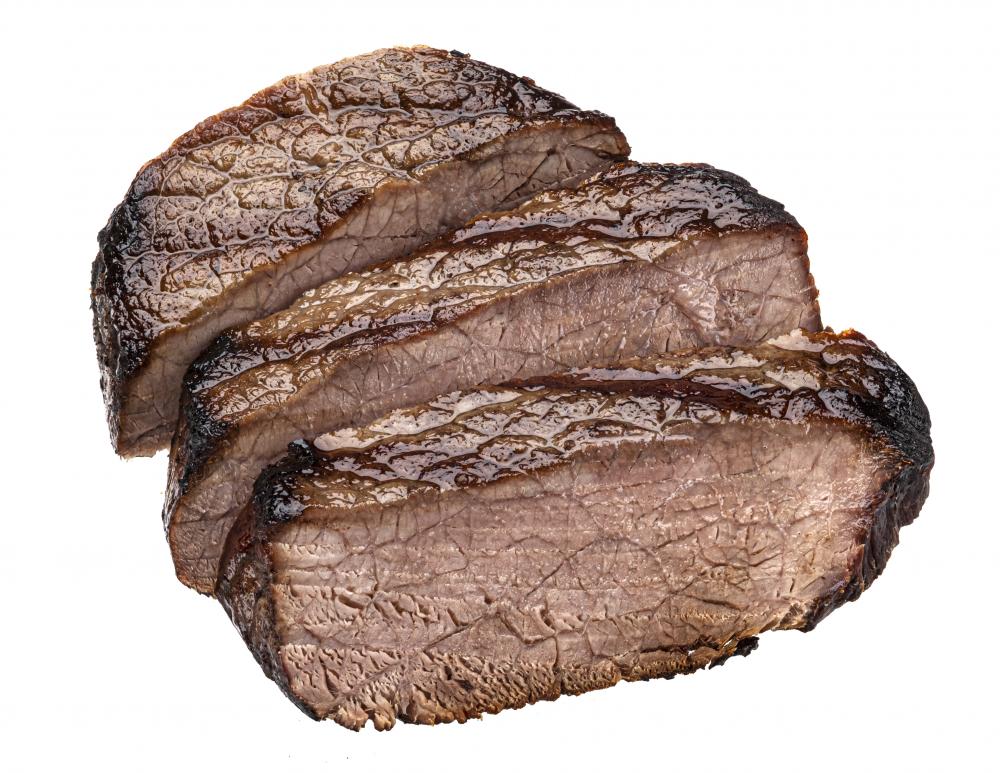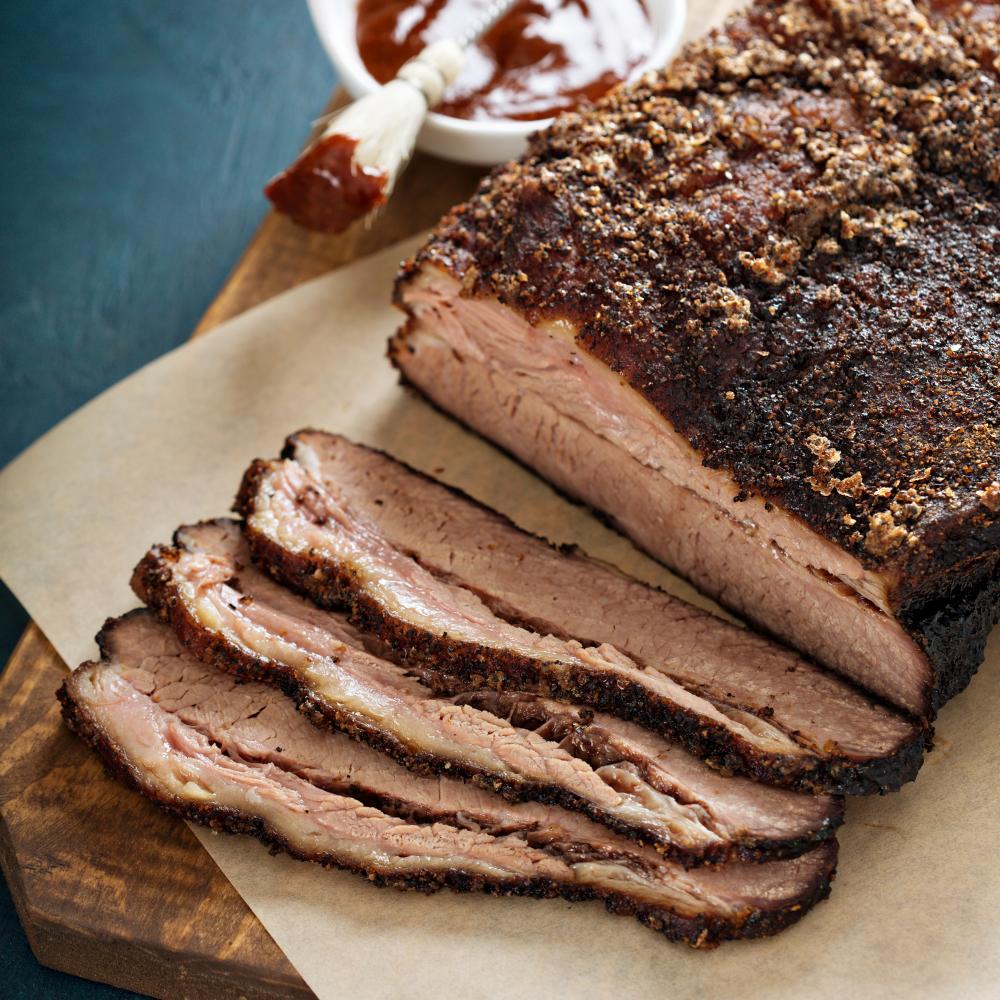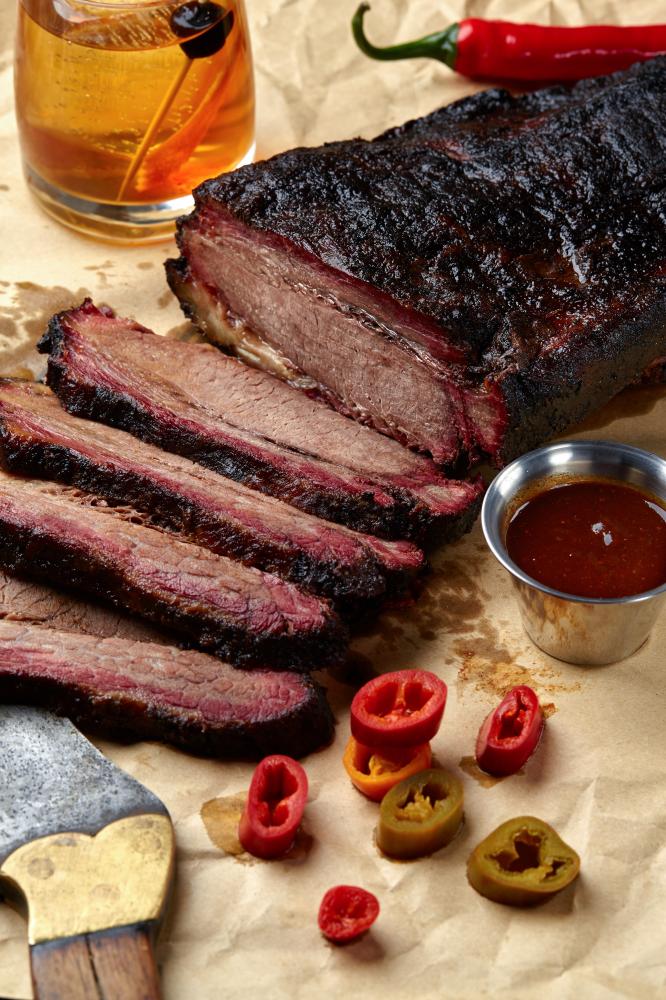
Understanding Rest Periods
At Brisket Pro, we’ve had countless discussions around the pivotal question: “How Long To Let Brisket Rest Before Cutting?” This isn’t just small talk; it’s a cornerstone of achieving brisket perfection. A brisket’s rest period is akin to the denouement of a great novel – it’s where everything comes together, making the difference between a good brisket and a transcendent one. Let’s delve into the why and the how, drawing from both traditional wisdom and our own smoke-stained experiences.
Why Resting is Essential
The resting phase allows the juices that have been pushed to the center of the brisket during cooking to redistribute throughout the meat. This is critical because cutting into your brisket too soon can result in a pool of lost flavor on your cutting board rather than in each succulent bite. My years by the smoker have taught me that patience here isn’t just a virtue; it’s a necessity.
Optimal Resting Duration
To answer the burning question, “How Long To Let Brisket Rest Before Cutting?” – our experience aligns closely with the general consensus that a minimum of one hour is essential. However, for a melt-in-your-mouth experience, we advocate for a two-hour rest period as the sweet spot. This allows ample time for the muscle fibers to relax and reabsorb those precious juices, enhancing both the flavor and texture of the brisket.
Resting Techniques
How you choose to rest your brisket can significantly impact the final outcome. Each method has its merits, and at Brisket Pro, we’ve experimented with them all to provide you with the most informed guidance possible.
Cooling Methods
- Room Temperature Rest: Ideal for those who prefer a firmer bark. Letting your brisket rest on the counter for up to an hour can achieve this, but be wary of the danger zone beyond that timeframe.
- Insulated Cooler Rest: For an extended rest, wrapping the brisket in foil and towels and placing it in a cooler not only maintains temperature but also prolongs the resting process without dropping into unsafe temperature ranges.
- Cambro or Steam Cabinet Rest: Utilized by professionals and competition cooks for its ability to hold brisket at an optimal temperature for several hours, ensuring it remains moist and tender.
Personal insight here: I’ve let a brisket rest in a cooler, wrapped snugly in towels, while I attended a nephew’s soccer game. Coming back to it hours later, I was greeted by a brisket that was still incredibly juicy and warm, ready to be the star of our late-afternoon barbecue. It’s moments like these that underscore the flexibility and importance of a proper rest in the brisket process.
Wrapped or Unwrapped?
Whether to rest your brisket wrapped or unwrapped is another facet worthy of consideration. Wrapped briskets, particularly in butcher paper or aluminum foil, retain heat and moisture, encouraging carryover cooking and ensuring the meat remains tender.
Conversely, allowing the brisket to rest unwrapped can lead to a firmer bark. It’s a matter of personal preference, but I find that a wrapped rest followed by a short period of unwrapping can strike a perfect balance between moist interior and crisp exterior.
The Impact of Resting on Flavor and Texture
Understanding ” How Long To Let Brisket Rest Before Cutting” is more than a logistical concern; it’s a fundamental aspect of brisket preparation that affects every nuance of flavor and texture. The rest period is when the magic of slow cooking comes full circle, allowing flavors to deepen and meld. This is when a brisket transcends from merely cooked meat to a tender, complex, and deeply satisfying meal.
In my journey with brisket, I’ve learned that the choices made after the brisket comes off the smoker are as critical as the preparation and cooking phases. A brisket rested correctly rewards you with a tender, juicy, and flavorsome experience that captures the essence of barbecue. It’s a testament to the art and science of low and slow cooking, showcasing how time, even after the fire has died down, plays a crucial role in achieving brisket perfection.
So, the next time you find yourself pondering, ” How Long To Let Brisket Rest Before Cutting?” remember, this rest period is your brisket’s final journey to perfection. Give it the time it deserves, and you’ll be amply rewarded at the dining table.

Understanding the Resting Process
At Brisket Pro, we often emphasize how critical the resting stage is after smoking your brisket. The question of How Long To Let Brisket Rest is not just common; it’s essential to unlocking the full potential of your brisket’s flavor and tenderness. The general consensus is that brisket should rest for at least one hour, but aiming for two hours brings better results. This duration allows the meat to reabsorb the juices that have mobilized during the cooking process, ensuring each slice is moist and flavorful. Resting is not just a recommendation; it’s a pivotal step in the brisket cooking ritual.
During my early days experimenting with brisket, I learned the hard way that rushing the resting phase often leads to a less satisfactory meal. The juices run out as soon as you slice into the brisket, leaving it drier than desired. Over time, I’ve appreciated that the patience involved in resting the brisket rewards you with a superior eating experience. It’s this transformative period where the brisket’s internal magic happens, allowing the meat to reach its peak potential.
Methods To Rest Brisket
There’s more than one way to rest a brisket, and the method you choose can affect the outcome. Let’s break down the nuances to find the best fit for your brisket.
Wrapped vs. Unwrapped
Deciding whether to rest your brisket wrapped or unwrapped is often a matter of personal preference combined with practical considerations. Wrapped, particularly in butcher paper or aluminum foil, can help insulate the meat, keeping it warm throughout the resting period. This method is especially useful if you need to hold the brisket for a longer duration before serving. On the flip side, resting unwrapped at room temperature encourages a slight cooling that can enhance the meat’s texture, especially the bark, giving it that sought-after crispiness.
Room Temperature Resting
- Letting your brisket rest at room temperature is ideal for a short rest, particularly effective if you’re aiming to serve the brisket within an hour or two. This method is straightforward but requires monitoring to ensure the brisket doesn’t cool too much, potentially entering the danger zone for food safety.
Cooler or Faux Cambro Resting
- For longer holding periods, resting the brisket in a cooler or faux Cambro can be incredibly effective. This method involves wrapping the brisket and placing it in an insulated cooler, sometimes pre-warmed with hot water, to keep the brisket at a safe temperature for several hours. It allows for flexibility in serving time, making it a favorite among BBQ enthusiasts hosting larger gatherings.
Personal Insights and Experiences
Through years of smoking and serving brisket, I’ve come to understand that the art of resting is as important as the cook itself. Every brisket has its personality, and how long to let brisket rest can vary slightly depending on its size and the cooking conditions of the day. In my experience, erring on the side of a longer rest generally produces better results. The meat becomes incredibly tender, almost buttery, as it slowly reabsorbs its juices. It’s a process that shouldn’t be rushed.
Once, I was pressed for time and decided to cut the resting short by half. Despite the brisket being perfectly smoked, the slices ended up less juicy than usual, a clear indicator of the importance of a full rest. Another time, I let a particularly large brisket rest for over three hours in a faux Cambro setup, and the result was phenomenal. The meat was tender, juicy, and full of flavor, easily one of the best I’ve ever made.
Resting is not just a pause in cooking; it’s an integral component of the brisket journey. Whether you’re a seasoned pro or a budding brisket enthusiast, understanding and respecting the resting phase will elevate your barbecue to new heights. Remember, when it comes to How Long To Let Brisket Rest, patience is not just a virtue; it’s the secret ingredient.
Achieving Perfection: The Ideal Rest for Brisket
At Brisket Pro, our collective years behind the smoker have taught us that precision and patience are the cornerstones of mouth-watering brisket. Discussing What Temp To Pull Brisket and Put in Cooler bridges these two principles elegantly. Smoking brisket is an art form as much as it is a science, where temperatures play a leading role in the final act.
Brisket, with its intricate marbling and tough persona, demands a low and slow approach to unlock its potential. The transformative moment, however, hinges on the post-smoke rest. The ideal window for resting lies between 200°F to 205°F. It’s a sweet spot where the brisket’s internal symphony of fats and connective tissues hum in harmony, leading to tender, juicy slices.
Resting brisket isn’t just a recommendation; it’s a critical step in the cooking process. The question of What Temp To Pull Brisket and Put in Cooler is more than just numbers. It’s about understanding the intricate dance between temperature and texture. At Brisket Pro, we advocate for resting your brisket in a cooler for a minimum of two hours to allow for this intricate dance to reach its perfect conclusion.
Insulated Resting: The Methods Explained
Choosing the Right Cooler for Your Brisket
The cooler method, often referred to as the “faux Cambro” technique, is a favorite among pitmasters for its simplicity and efficiency. A heavy-duty cooler not only maintains the brisket at an optimal resting temperature but also makes the transport of this prized meat safer and more convenient. Wrapping the brisket in towels before placing it in the cooler adds an extra layer of insulation, ensuring the brisket remains in its ideal resting state.
Personal Insights on Resting Brisket
Through trial and error, I’ve found that a brisket’s rest can be as crucial as its cook. The moment when What Temp To Pull Brisket and Put in Cooler is decided can mark the difference between an ordinary brisket and an unforgettable one. My preference leans towards a rest period that stretches beyond the two-hour mark, especially for larger cuts. This extended rest in a well-insulated cooler allows for a gradual decrease in temperature, which I’ve found to be key in achieving a brisket that’s not only tender but also retains moisture like no other.
It’s vital to remember that the brisket continues to cook slightly due to carryover cooking during this rest period. Hence, pulling it off the smoker at the right temperature ensures that it doesn’t overcook during the rest. The commonly cited magic number of 203°F is a guideline, but always trust your instincts and the feel of the meat.
Cooling and Safety Considerations
Resting your brisket properly is not just about enhancing flavor and texture; it’s also a safety consideration. The risk of bacterial growth increases if the brisket’s temperature falls below 140°F for an extended period. This is where the cooler method shines, maintaining a safe temperature while allowing the brisket to rest. However, it’s crucial to monitor the brisket’s internal temperature during the rest period, ensuring it remains within a safe range.
Our experience at Brisket Pro has taught us that every brisket is a story of its own. While we can provide guidelines such as resting at 200°F to 205°F and using a cooler for an insulated environment, remember that each brisket may require slight adjustments. The key is to observe, learn, and adapt, ensuring that every brisket you cook is better than the last.
In conclusion, asking What Temp To Pull Brisket and Put in Cooler isn’t just a query; it’s an invitation to delve deeper into the craft of brisket preparation. By understanding and applying these insights, you’re not just cooking; you’re creating experiences, one brisket at a time.

How long should a brisket rest before cutting?
At Brisket Pro, we stand by the belief that a brisket should rest for a minimum of one hour before cutting to ensure optimal flavor and tenderness. However, towing the line of brisket perfection, we advocate for a two-hour rest period as the sweet spot. This duration allows the brisket’s muscle fibers to relax and reabsorb the juices, providing a melt-in-your-mouth experience that can’t be rushed. Remember, the patience you invest in resting your brisket pays off in the quality of the slice on your plate.
Should I rest my brisket wrapped or unwrapped?
The decision to rest your brisket wrapped or unwrapped hinges on your preference for bark and temperature maintenance. At Brisket Pro, we’ve found that wrapping the brisket, particularly in butcher paper or aluminum foil, retains heat and moisture effectively, encouraging carryover cooking and ensuring tenderness. On the flip side, resting it unwrapped promotes a firmer, crisper bark, which some of our barbecue aficionados prefer. A hybrid approach–resting wrapped, then unwrapping for a brief period–can harmonize moist interior with a crisp exterior, striking a perfect balance for many.
Can a brisket rest too long?
Indeed, there is such a thing as resting a brisket too long, though it’s a relatively forgiving threshold. Extended rest periods, especially beyond four hours in unregulated conditions, can begin to negatively affect the brisket’s texture, and in some instances, food safety. Utilizing methods like the faux Cambro or insulated cooler rest can significantly extend this window by maintaining safe temperatures. However, vigilance is key. Always aim for a balance that respects both the art of resting and the principles of food safety.
Does letting brisket rest make it more tender?
Absolutely, letting your brisket rest is a crucial step in achieving a more tender result. This resting phase is when the brisket’s muscle fibers, which have contracted and tightened during the intense cooking process, have the opportunity to relax and reabsorb the juices. It’s akin to allowing a sponge to expand and soak up moisture once more. A rested brisket not only promises enhanced flavor but delivers on tenderness that distinguishes a good brisket from a great one. It’s a testament to the magic that unfolds in patience, transforming your brisket into a tender, juicy masterpiece.
Have you ever experienced the wonders of a perfectly rested brisket? Or do you have more questions on achieving that impeccable texture and flavor? Feel free to share your experiences or ask your questions below. Let’s continue to learn and grow together in our brisket journey.
Brisket Resting Resources
- Food Poisoning – NHS – Learn about the risks of bacterial growth in food and how to ensure food safety during resting periods.
- Food Safety and Inspection Service (FSIS) – Find guidelines on safe food handling practices to prevent foodborne illnesses.
- Iowa State University Extension and Outreach – Explore resources on food safety, including proper temperature control during cooking and resting.
- Food Safety – Centers for Disease Control and Prevention (CDC) – Access information on food safety, including temperature control and preventing foodborne illnesses.
- U.S. Food and Drug Administration (FDA) – Learn about food safety regulations and guidelines for handling and storing food properly.
